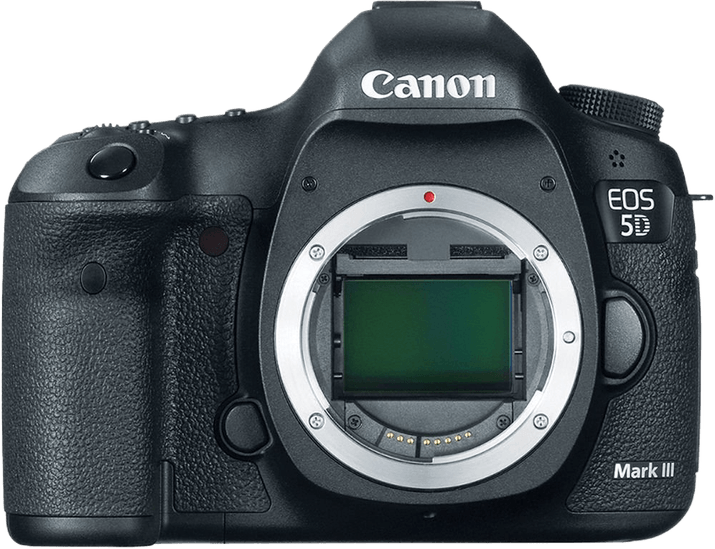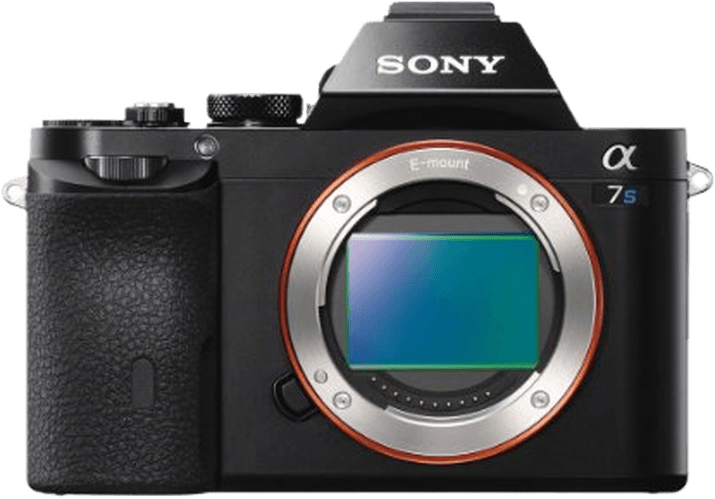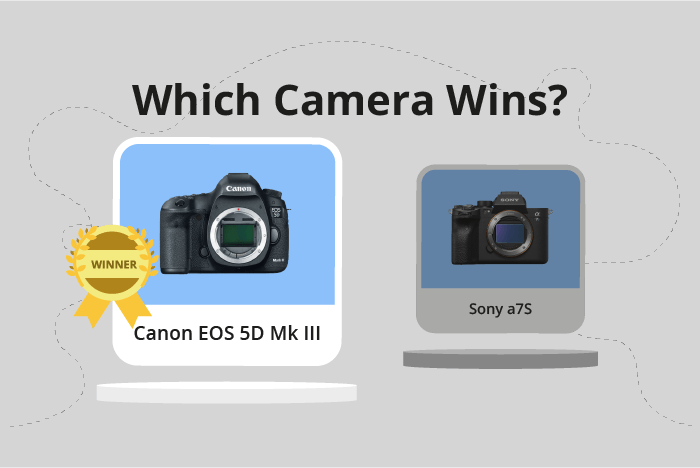Canon EOS 5D Mark III vs Sony a7S Comparison
Canon EOS 5D Mark III

Sony a7S

The Canon EOS 5D Mark III takes the lead with a score of 65/100, outperforming the Sony a7S, which scores 55/100. Both cameras have their respective advantages, but let’s first look at their common features. Both cameras were released in the early 2010s, with the 5D Mark III in 2012 and the a7S in 2014. They also share similar price points, with the 5D Mark III at $3499 and the a7S at $2499.
The winning 5D Mark III, a DSLR, boasts a larger size (152 x 116 x 76mm) and a heavier weight (950g / 2.09lbs), which provides a more robust and stable feel. On the other hand, the a7S is a mirrorless camera with a more compact size (127 x 94 x 48mm) and lighter weight (489g / 1.08lbs), making it more portable and easier to carry around.
Considering these specifications, the Canon EOS 5D Mark III is the better option for those who prefer a sturdier camera, while the Sony a7S is ideal for those who value portability without sacrificing quality.
Canon EOS 5D Mark III vs Sony a7S Overview and Optics
The Canon EOS 5D Mark III wins in the optics comparison with a score of 67/100, while the Sony a7S scores 60/100. Both cameras share some common specifications, such as a CMOS sensor, Full Frame sensor size, and the absence of image stabilization. They also have different lens mounts, with the Canon using the Canon EF mount and the Sony using the Sony FE mount.
The Canon EOS 5D Mark III has a higher megapixel count of 22.3, compared to the Sony a7S’s 12.2. This means the Canon camera captures more detail in images, resulting in better image quality. Additionally, the Canon has a faster shooting speed of 6 frames per second, allowing for better capture of fast-moving subjects or action scenes.
On the other hand, the Sony a7S has a higher DXOMARK sensor score of 87, compared to the Canon’s score of 81. This indicates that the Sony camera performs better in low-light situations and has a higher dynamic range. However, this advantage is not enough to offset the lower megapixel count and slower shooting speed.
The choice between the Canon EOS 5D Mark III and the Sony a7S ultimately depends on the user’s priorities. The Canon is better suited for those who value higher resolution images and faster shooting speeds, whereas the Sony may be more suitable for those who prioritize low-light performance and dynamic range.
In comparing the optics of both cameras, the Canon EOS 5D Mark III emerges as the more versatile choice due to its higher megapixel count and faster shooting speed. However, the Sony a7S remains a strong contender for photographers who prioritize low-light performance.
Canon EOS 5D Mark III vs Sony a7S Video Performance
The Canon EOS 5D Mark III and the Sony a7S both have a video score of 56/100, making them equal in terms of video capabilities. They share the same maximum video resolution of Full HD and video dimensions of 1920 x 1080. Additionally, both cameras have a maximum video frame rate of 60fps and neither has built-in time-lapse functionality.
Despite the equal scores, the Canon EOS 5D Mark III has some advantages over the Sony a7S. The 5D Mark III is known for its excellent color reproduction and accurate autofocus system. These features make it a great choice for videographers who prioritize color accuracy and sharp focus in their videos. The 5D Mark III also has a longer battery life, allowing for extended shooting sessions without the need for frequent battery changes.
On the other hand, the Sony a7S has its own strengths. It is renowned for its exceptional low-light performance, making it ideal for shooting video in dimly lit environments or during nighttime. The a7S also has a more compact and lightweight design, which makes it easier to carry around and use for extended periods of time.
Taking these factors into consideration, the Canon EOS 5D Mark III is better suited for videographers who value color accuracy, sharp focus, and extended battery life, while the Sony a7S is more suitable for those who need excellent low-light performance and a compact, lightweight camera. Ultimately, both cameras offer impressive video capabilities, and the choice between them depends on the specific needs and preferences of the user.
Canon EOS 5D Mark III vs Sony a7S Features and Benefits
The Canon EOS 5D Mark III wins the feature comparison with a score of 59/100, while the Sony a7S scores 54/100. Both cameras share some common specifications, such as a lack of touchscreen, GPS, and Bluetooth. However, there are differences that make one camera stand out over the other.
The Canon EOS 5D Mark III has a larger screen size of 3.2 inches, compared to the Sony a7S’s 3-inch screen. Additionally, the screen resolution of the Canon camera is higher at 1,040,000 dots, providing clearer and sharper image previews. The absence of additional features like GPS, Wi-Fi, and Bluetooth in the Canon EOS 5D Mark III does not affect its overall performance.
On the other hand, the Sony a7S offers a flip screen and Wi-Fi connectivity, which the Canon EOS 5D Mark III lacks. The flip screen allows for easier composition when shooting from difficult angles, while Wi-Fi connectivity enables quick image sharing and remote control of the camera. Despite having a lower overall score, these features make the Sony a7S more versatile in specific shooting situations.
Considering the feature scores and specifications, the Canon EOS 5D Mark III is the better camera due to its larger screen size and higher screen resolution. However, the Sony a7S should not be overlooked, as its flip screen and Wi-Fi connectivity provide advantages in certain situations. Ultimately, the choice between these two cameras depends on the photographer’s preferences and desired shooting scenarios.
Canon EOS 5D Mark III vs Sony a7S Storage and Battery
The Canon EOS 5D Mark III triumphs over the Sony a7S in storage and battery with a score of 76/100, compared to the Sony a7S’s 21/100. Both cameras accept SD/SDHC/SDXC memory cards, but the Canon 5D Mark III also supports Compact Flash and UDMA cards, offering more storage flexibility. Additionally, the Canon 5D Mark III has two memory card slots, while the Sony a7S has only one.
The Canon 5D Mark III’s battery life is significantly longer, providing 950 shots per charge, compared to the Sony a7S’s 380 shots. Both cameras use different battery types: the Canon 5D Mark III uses the LP-E6, while the Sony a7S uses the NP-FW50. Neither camera offers USB charging.
Despite the Sony a7S’s lower score, it does accept Memory Stick Duo/Pro Duo/Pro-HG Duo cards, giving users an alternative storage option. However, the Canon 5D Mark III’s superior storage capabilities and battery life make it the clear winner in this category.
Alternatives to the Canon EOS 5D Mark III and Sony a7S
Are you still undecided about which camera is right for you? Have a look at these popular comparisons that feature the Canon EOS 5D Mark III or the Sony a7S:

